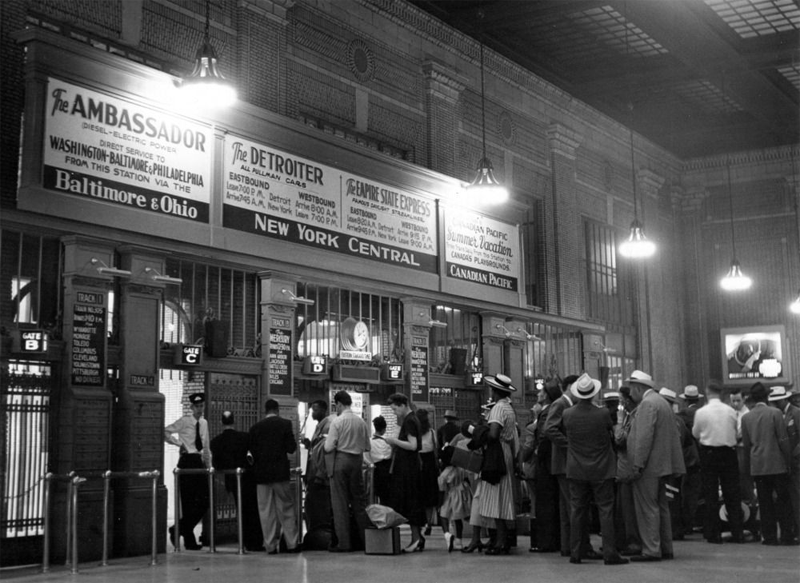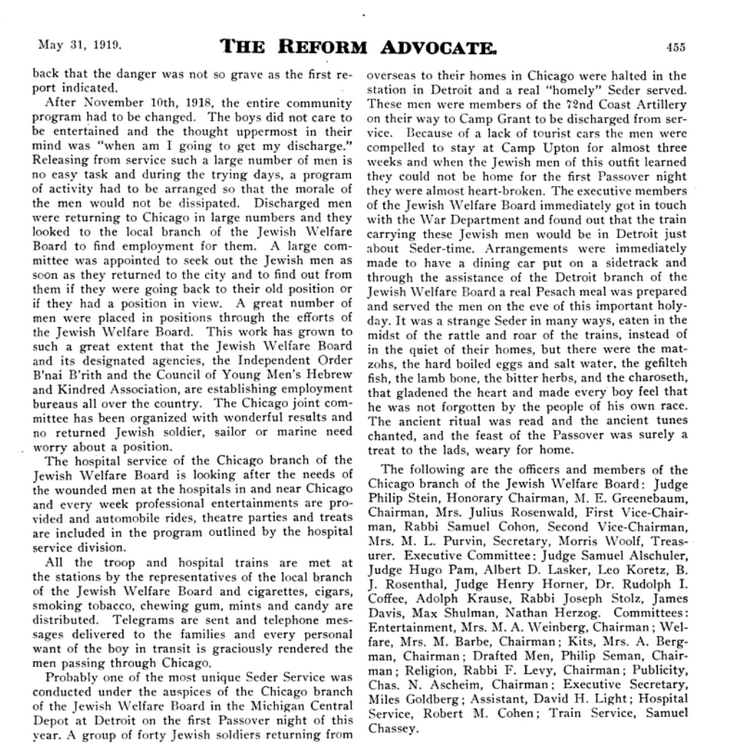In trying times, historians rush forth with morally instructive historical parallels to shore up our flagging morale.
Look, we’ve been through this before. In such-and-such time, things were worse.
But for COVID, instructive parallels (in recent US history, at least) are not easy to find. The Spanish influenza epidemic of late 1918 faded by the following spring. The polio outbreaks of the 1950s surged in summer. In both cases, Passover benefited from the infectious diseases’ seasonal patterns: the holiday itself was little or unaffected.
Are we looking at this the wrong way around? Rather than an epidemiological precedent, consider a historical moment when the community adapted, banded together, found a way to uphold tradition and identity, and came out okay in the end. After all, that is what Pesach celebrates.
Although World War I came to a formal end in November 1918, it took many months afterward for American soldiers to return home. In the spring of 1919, the Jewish Welfare Board in Chicago got word that Jewish veterans from the 72nd Coast Artillery – en route from Europe to discharge at Camp Grant in Rockville, Illinois – would be stuck in transit for the first seder on April 14. The soldiers were nearly three weeks behind schedule, having been parked at New York’s Fort Upton because of a shortage in passenger train cars.
Upon receiving the news, the Chicago office contacted the War Department, which calculated that the soldiers would arrive before sundown in Detroit’s Michigan Central Railroad Depot (then with 200 trains departing daily, now under renovation for Ford’s mobility innovation district). Armed with the train timetable, the Chicago office contacted the Detroit Jewish Welfare Board to pull off what the press would call “the most unique Sedar since the time of Moses.”

Detroit Board representatives, including Fred M. Butzel, I. W. Jacobs, Sarah Simons Kaplan, Bernard Ginsburg, and Milton Alexander, leapt into action, taking charge of a Pullman dining car, pulling it onto a sidetrack, and transforming it into the site of a community seder. “Mrs. I. W. Jacobs” managed the decorations, including red carnations and fern fronds on every dining table.
Preparations complete, the board members strode through the terminal, calling the passengers to join the locomotive seder; 38 Jewish soldiers, plus two Irish-American friends, came forward. Twenty were seated at 5:30pm, sixteen at 6:30pm, and the last four at 7:00pm. As newspaper coverage of the day wryly noted, “An old-fashioned Sedar service, strictly in conformity with ritualistic laws ... was shortened for each succeeding group.”
The soldiers entered the festooned dining car and “found themselves seated at real tables, with snowy linen and napkins, real silver, and, best of all, the most wonderful food that their abused palates had tasted for more than a year and a half.” The traditional meal was catered by Harry Weiss (the Harry Weiss whose restaurant was on Broadway downtown – not the Harry Weiss, born Erik Weisz, who was better known by the stage name Harry Houdini and had worse luck in Detroit.)
Dinner included “the matzohs, the hard boiled eggs and salt water, the gefilteh fish, the lamb bone, the bitter herbs, and the charoseth.” As one soldier supposedly quipped upon seeing the spread, “It’s a real deliverance this time.”
As another year of “Zeders” looms, it is instinctive to feel nostalgic for conventional seders of Passovers past, but instructive to look to those unconventional seders. Therein lie the examples of innovation, generosity, and grit that breathe life into the celebration of the Exodus.
Catherine Cangany, PhD is executive director of JHSM. For our events calendar and back issues of our publications, visit michjewishhistory.org.

Comments
Sign in or become a Nu?Detroit member to join the conversation.
Just enter your email below to get a log in link.